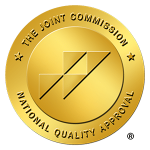Cyclobenzaprine, commonly recognized under the brand name Flexeril, serves as a muscle relaxant by blocking nerve impulses or pain signals from reaching the brain. It is often recommended in conjunction with physical therapy and rest to treat discomfort or injuries related to skeletal muscles. For those prescribed this medication, it’s essential to understand the following: what is cyclobenzaprine, is cyclobenzaprine addictive, the effects of cyclobenzaprine abuse, how long cyclobenzaprine stays in your system and who abuses Flexeril and why?
What is Cyclobenzaprine (Flexeril)?
Cyclobenzaprine, an FDA-approved muscle relaxant, effectively alleviates muscle spasms and chronic pain stemming from musculoskeletal conditions like strains, sprains, and fibromyalgia. Classified under tricyclic antidepressants, it’s also employed for managing depression, migraines, insomnia, tinnitus, ADHD, and musculoskeletal issues. As a central nervous system depressant, it curbs muscle activity to provide relief. Cyclobenzaprine, requiring a prescription for legal acquisition, is dispensed in both immediate and extended-release tablets.
Well-known brand names for cyclobenzaprine are:
- Flexeril
- Amrix
- Fexmid
- FusePaq Tramadol
It’s also known by street names such as:
- Flexies
- Cyclone
- Mellow Yellow
Primarily, Flexeril is used alongside physical therapy, massage, or exercises for muscular problems, and it may be combined with other treatments for different medical conditions.
What is Cyclobenzaprine Used For?
Cyclobenzaprine serves primarily to soothe muscle aches, soreness, and tightness stemming from muscle injuries, including strains and sprains. Typically included in a holistic treatment regimen that might also encompass rest, physical therapy, or exercise, this muscle relaxant operates by obstructing specific nerve impulses to the brain. This action aids in easing discomfort from skeletal muscle issues. It’s essential to seek advice from a healthcare provider to understand how cyclobenzaprine can be best utilized according to your unique health requirements and circumstances.
Is Cyclobenzaprine Addictive?
Cyclobenzaprine isn’t classified as a DEA Scheduled substance, suggesting a lower risk of abuse and addiction. Despite this, there’s evidence that it can potentiate the effects of alcohol, benzodiazepines, and opioids, leading to non-medical use for its euphoric and sedative properties. Between 2004 and 2011, emergency room visits linked to muscle relaxants spiked by 84%, with Flexeril being a significant contributor.
Following the DEA’s 2011 reclassification of carisoprodol (Soma) as a Schedule IV drug, the misuse of Flexeril may have increased due to its easier availability as a non-scheduled drug. Mixing cyclobenzaprine with other substances to amplify psychoactive effects can heighten the risk of overdose.
Misuse signs include using Flexeril beyond the recommended 2-3 week period, obtaining it without a prescription, or using it in ways not prescribed, all of which are indicative of potential abuse.
Cyclobenzaprine Side Effects
Cyclobenzaprine may lead to various side effects, and while they might not affect everyone, it’s critical to seek medical guidance if you encounter any of the following symptoms while on the medication:
- Lack of coordination or clumsiness
- Sudden loss of consciousness
- Confusion or disorientation
- Feelings of depression
- Difficulty urinating
- Ringing in the ears
- Skin reactions like hives or rashes
- Unusual dreaming patterns
- Jaundice (yellowing of the skin)
In situations of overdose, immediate medical assistance is vital if symptoms such as severe drowsiness, skin that is dry and warm, accelerated heart rate, breathing difficulties, body temperature fluctuations, hallucinations, muscle rigidity, restlessness, vomiting, or seizures are observed.
Some side effects might not necessitate urgent medical care and may reduce as your body adapts to the drug. These can include:
- Blurry vision
- Feeling dizzy or light-headed
- Sleepiness
- Mouth dryness
- Stomach-related discomforts like nausea, vomiting, constipation, or diarrhea
- Increased need to urinate
- Headaches
- Trembling
- Sensations of numbness or tingling
- Difficulty sleeping
- Muscle weakness

Signs of Cyclobenzaprine Addiction
Though cyclobenzaprine is generally regarded as non-addictive, misuse and dependency are possible due to its central nervous system depressant properties. Individuals may misuse Flexeril seeking relaxation, mild euphoria, or sedation. Prolonged, high-dose use can alter neurotransmitter activity in the brain, leading to physical dependence and, potentially, addiction.
Signs of Flexeril addiction include:
- Continued use of Flexeril beyond the necessary period or dosage.
- Increasing dosage to achieve the initial effect.
- Preoccupation with obtaining and using Flexeril.
- Inability to cease usage despite wanting to.
- Misrepresenting symptoms to acquire more prescriptions.
- Noticeable changes in appearance, hygiene, or behavior.
Flexeril addiction might also involve combining the drug with substances like alcohol to intensify the sedative effects, or using it to mitigate the stimulant effects of drugs such as cocaine or Adderall. Withdrawal symptoms from Flexeril, while typically mild, may include headaches, nausea, fatigue, and drug cravings, signaling a dependency.
What is the Flexeril High?
Flexeril abuse often seeks the mild euphoria it induces at high doses, offering a sense of relaxation, sleepiness, and a feeling akin to floating. While this high is not as potent as that of many drugs of abuse, it tempts users to persist in taking cyclobenzaprine despite potential dangers. Typically, these effects do not occur at therapeutic doses and are more likely to be experienced by first-time users if at all.
Does Cyclobenzaprine Interact with Other Drugs?
Combining cyclobenzaprine with monoamine oxidase inhibitors (MAOIs) can result in significant adverse effects. It’s crucial to disclose your complete medication list to your healthcare professional to prevent any harmful drug interactions.
Who is at Risk of Cyclobenzaprine Addiction?
Flexeril addiction can affect anyone, yet specific circumstances heighten the likelihood of addiction.
Potential Risk Factors for Flexeril Abuse Include:
- People with a personal or family history of substance or alcohol dependency.
- Those frequently exposed to environments where drug use is common.
- Individuals with pre-existing mental health conditions.
- Persons unaware of the potential for addiction associated with prescription medications.
Cyclobenzaprine Detox and Withdrawal
Recognizing withdrawal symptoms is a key sign of cyclobenzaprine addiction. While withdrawal from cyclobenzaprine isn’t typically life-threatening, it can exacerbate symptoms related to withdrawal from other substances.
Common withdrawal symptoms from cyclobenzaprine include:
- Exhaustion
- Headaches
- Nausea
- Anxious feelings
- Chill sensations
- Elevated temperature
- Overall malaise
Individuals grappling with a Fexeril addiction may opt for medical detoxification to ease the detox process. Medical detox facilities specializing in prescription medication addiction offer continuous medical oversight to manage the discomfort of withdrawal and handle any arising health complications.
Beyond managing physical symptoms, medical detox also lays the groundwork for comprehensive addiction treatment, integrating individual or group therapy. This initial step is crucial for a smooth transition into rehabilitation, enhancing the chances for a successful recovery by offering structured support to minimize relapse risks.
Cyclobenzaprine Overdose
Overdosing on Flexeril, particularly with high doses or when mixed with alcohol or opioids, poses serious risks. Overdose symptoms may encompass:
- Profound sleepiness
- Accelerated heart rate
- Vertigo
- Nausea and expulsion
- Impaired speech
- Shaking
- Illusions
- Speech difficulties
- Unconsciousness
- Comatose state
Critical cases can result in heart failure, seizures, and Neuroleptic Malignant Syndrome, marked by mental confusion and autonomic nervous system malfunction. To manage a Flexeril overdose, the FDA recommends measures like stomach pumping and administering activated charcoal to minimize absorption.

How Long Does Cyclobenzaprine Stay in Your System?
Cyclobenzaprine can significantly affect daily life depending on how long it remains in the system. Its elimination process varies based on several factors.
Cyclobenzaprine Half-Life
The average half-life of cyclobenzaprine ranges between 18 hours, with a wider span of 8-37 hours. This means the body might take approximately 2 days to 8.5 days to completely clear Flexeril, depending on the specific half-life duration in an individual’s system.
How Long Does Cyclobenzaprine Stay in Your Urine?
Flexeril’s presence in urine can vary, remaining detectable from three to eight days following higher dosage consumption. For those taking doses within the recommended range, Flexeril typically becomes undetectable in urine about four days after the last intake.
How Long Does Cyclobenzaprine Stay in Your Blood?
After taking Flexeril, its peak concentrations in the blood occur within seven to eight hours. Its detectability in the bloodstream aligns with its half-life, meaning Flexeril could be traceable from three to four days up to 10 days after use, influenced by the individual’s usage patterns.
How Long Does Cyclobenzaprine Stay in Your Hair?
While not commonly tested through hair samples, Flexeril can be detected by analyzing 1.5 inches of hair from the scalp. Though individuals might not show traces in the initial three to four days post-consumption, Flexeril can still be found in hair samples up to three months (90 days) later.
How Long Does Cyclobenzaprine Stay in Your Saliva?
Saliva testing for Flexeril is rare and typically costlier than other methods. Limited data is available on its detection window in saliva, but it’s suggested that Flexeril may be detectable for up to 36 hours following ingestion.
Cyclobenzaprine Addiction Treatment at Hope Harbor Wellness
Located in the serene suburbs of Atlanta, Hope Harbor Wellness is your ally in the fight against cyclobenzaprine addiction in Atlanta. Our cyclobenzaprine drug rehab centers, dedicated to holistic recovery, are ideally situated to offer you the support you need.
Our compassionate outpatient program collaborates with top-tier medical cyclobenzaprine detox facilities, ensuring a safe and effective detox process. Once free from addictive substances, you can seamlessly transition into one of our specialized outpatient treatment programs at Hope Harbor Wellness, designed to address substance use disorders:
- Outpatient Rehab: A flexible program tailored to fit into your daily life.
- PHP (Partial Hospitalization Program): Offers a structured yet non-residential approach to treatment.
- IOP (Intensive Outpatient Program): Provides more intensive care while allowing you to maintain daily responsibilities.
- Dual Diagnosis Treatment Program: Caters to those with co-occurring mental health disorders.
Our Flexeril addiction treatment programs incorporate a variety of interventions:
- MAT (Medication-Assisted Treatment): Utilizes medications to ease withdrawal symptoms and cravings.
- Psychotherapy: Addresses underlying psychological aspects of addiction.
- Group Therapy: Offers peer support and shared learning experiences.
- Individual Counseling: Provides personalized guidance and support.
- Family Therapy: Helps heal and strengthen family relationships.
- Holistic Therapies: Focuses on overall well-being, including physical, emotional, and spiritual health.
- Aftercare: Ensures ongoing support post-treatment.
Embark on your journey from addiction to recovery with Hope Harbor Wellness. Trust in our dedicated team to guide you every step of the way. For more information or to start cyclobenzaprine addiction treatment in Atlanta, GA, call our admissions team at 678-605-9725.












